SMART Sensors in tyres or on rims
- By Alan Bennetts
- December 23, 2020

Since the 1970’s the Anti-Lock Braking system, now almost ubiquitous, has been helping drivers retain control during heavy braking on wet or slippery roads. The wheel rotation sensors, at the heart of ABS, have been co-opted into traction and stability control systems. Drivers do not consciously rely on these systems to save them from a mistake but seasoned drivers (code of older people) will have noticed that they appear to be much better drivers now than when they were in their 20’s. Which is surprising as reaction times increase with age.

What has been happening over the last thirty years is that vehicle safety systems have become more intelligent and tyres have more grip resulting in minor driver errors being recoverable by a combination of driver input, ABS, ESC and ATC. This list of potentially lifesaving innovations will soon include ‘look-ahead systems’ preventing us from tailgating the car in front or straying out of our motorway lane. None of these worthwhile advances has relied upon sensors embedded in the tyre because such sensors were not needed. Will embedded tyre sensors be capable of delivering worthwhile improvements to safety and/or vehicle dynamics without causing service and support problems for vehicle owners.
Quiet tyres
To develop tyres that run more quietly, with better grip and with lower rolling resistance knowledge of what is happening to the tyre as inputs change is vitally important. There will always be a need for tyre sensors that can provide real operating data that supports the predictions made by the analytic tyre models that are increasingly at the centre of our tyre development. Bay Systems responded to this need in 2006 by developing the Tyre Cavity Microphone (TCM) and other measurement modules that are used to study the behaviour of tyres in the laboratory and more importantly on the road, the environment where they are used. When comparing laboratory and road measurement it was clear that road data contains random variations not seen in the laboratory, see figures 1a & b.
The sound pressure level (SPL) inside a tyre is usually dominated by cavity resonance modes, the primary mode being strongest. The rms level of the noise inside the tyre’s cavity, at any given speed, responds to the texture of the road surface, the coarser the texture the higher the rms level. With a little signal processing the signal from the TCM’s microphone can be processed to give an indication of the road surface condition as can the signal from the TCA’s accelerometer mounted or embedded in the tyre liner, see figures 2 a & b.
The microphone positioned on the rim and integrated into the TPMS housing is potentially in a much safer location than a sensor buried in the tyre’s structure. Tyre fitters are used to remove and install TPMS modules making maintenance easier and more affordable than repairing sensors buried in a tyre’s structure. Inevitably sensors and systems will fail and any sensor mounted in the tyre is destined to have a stressful life. Tyre liner temperatures can exceed 120 degrees C depending on; speed, ambient temperatures and tyre type. Elevated temperatures (>50 degrees C) degrade batteries and semi-conductors. Most semi-conductors fail or suffer dramatically shorter service lives if their ambient temperature regularly reaches 80-100-degree C.
For many drivers the prospect of warning lights burning on their dashboards due to tyre mounted transducers failing will be very unwelcome, particularly if the recommended cure is to buy a new tyre. If the only way to pass the annual vehicle inspection, common in many countries, is for the tyre safety system to be working or not fitted then the not fitted option will be preferred by most buyers of used vehicles. If SMART wheel sensors can be shown to deliver genuine benefits then integrating them into a rim mounted package might be the lowest risk approach, at least from the customer’s perception.

Universal TMS
A Universal Tyre Monitoring System (UTMS) package would therefore appear to be the most attractive option in terms of convenience and minimising the costs associated with maintenance and repair. Essentially the Bay Systems’ TCM system is a UTMS system, albeit for R&D use only. The key question is therefore; ‘Can the data from UTMS be usefully employed to enhance vehicle utility, handling and safety?’ This is a difficult question to answer, for handling and safety, as for these applications the chassis management system (CMS) computer must receive and process signals in real time for the information to be usefully employed. Being informed that road surface icing has occurred some 30 metres after the vehicle has transitioned onto ice is liable to be too late. The signal from a tread liner accelerometer, see figures 3a. shows the transition from wet to flooded road, N.B. the vehicle was not aquaplaning but a slight increase in speed might well have invoked it. This raw time history would need to be processed before it could be used to trigger an intervention, in figure 3b a wavelet transform is used to highlight the differences between wet and flooded road surfaces. Real time responses imply high data rates from sensors, which in turn result in higher power consumption. Getting power to and signals back from the two front wheel sensors, rear wheel road surface information is typically front wheel data delayed by 3 metres, or from all wheels will be a challenge. Vehicles may be parked for days and even weeks, UTMS must shut down completely to conserve battery life. This may be achieved using a motion switch, these are readily available but as always adding complexity increases the risk of failures. The bigger problem is how to maintain and recharge the battery during normal usage. Any form of physical coupling through a connector will certainly be damaged or fail through water ingress making some type of induction coupled charging a more attractive option.
Low power radio transmission has worked well for TCM. However, such a system across the entire vehicle fleet may present problems on densely trafficked roads. On a busy motorway a vehicle might pass within 2 metres of another vehicle at a rate of 10 per second. Should all of these vehicles be using the UTMS radio spectrum then there will be up to 40 channel contentions per second to resolve. It is unlikely that radio spectrum will be made available that allows space for more than 100 channels. Each vehicle’s UTMS radio system must be primed to channel hop to avoid contentions from up to 10 interfering vehicles per second while sustaining a minimum data rate of 100kbytes per second.
Such a work load imposed be an ever-changing mix of vehicles will be difficult to manage without gaps in the data. A possible solution exists if the transmitted power from UTMS is very low, to the point that signals are only detectable inside the transmitting vehicle’s own wheel arch. Very low power radio transmission also brings low power drain at the transmitter making power supply easier. However, it also implies that a high receiver sensitivity might be needed. The extremely weak signals from nearby vehicles may therefore become detectable which returns us to the problem of radio channel contentions. Setting a low transmission power limit is therefore likely to be an area of diminishing returns and the channel contention issue is likely to always exist for high data rates.

To calculate the instantaneous rolling resistance of each wheel the CMS will require only two measurements; the temperature of the tyre and its pressure. A once per second reading rate for these two parameters would be enough, due to the tyre’s relatively high thermal inertia and
the normally slow rate of change of inflation pressure. The liner temperature measurement might be over a single area or across a section of the tyre. In the case of our TCT system (aimed at tyre R&D) the measurement is over 64 pixels and can stretch from bead to bead or be focused on an area if interest e.g. the tyre’s shoulder with an accuracy of 0.1 degrees C and resolution of 0.01 degrees C. A measurement cycle, even at high resolution would require a data packet of less than 200 bytes which with overhead might be 1kbytes. This rate would fit into the radio channels even on a busy motorway making dynamic estimation of rolling resistance possible while real time road surface measurement would be problematic.
Rolling resistance can account for up to 30% of battery energy in an EV making the choice of tire and the way the vehicle is driven very important; potentially being the difference between driving and walking the last few miles home on a cold wet night! There will be, for any journey, an optimum vehicle speed and route where energy consumption will be minimized. The probability of reaching the destination will be increased if this route is followed but it is more important to alert the driver if there is a significant probability of not reaching the destination on the remaining battery charge.
EVs with batteries that are over three years old may have battery capacities of 80% or less of the new capacity. This makes a planned journey of just 100miles (160km) problematic, particularly when air conditioning, heater and windscreen wipers are all operating. This range deficit may increase with traffic conditions such as road works, detours, accidents etc. To increase driver confidence a fully integrated vehicle management and GPS route planning system would need to use environmental data such as ambient temperature, wind speed and direction together with vehicle data such as load and UTMS derived tyre liner temperature and pressure to calculate the projected energy consumption for any proposed route. For this total tyre energy budget to be calculated for the journey the full tyre specification will be needed for each tyre i.e. the rolling efficiency for all temperatures, inflation pressures, loads and temperatures. The GPS navigation system, using these parameters and taking into account traffic updates would then evaluate the probability of reaching the destination without a battery recharge. If the journey was beyond the battery range an alternative route would be suggested that would pass a recharging station.

Data accuracy
The key to all this working reliably will be the accuracy of the tyre specification data entered into the CMS. What will be needed will be the full energy dissipation profile for all conditions, not just the laboratory performance rating, though this would be better than nothing. Tyres are currently rated for energy dissipation (rolling resistance) when operating in a laboratory at 25 +/- 4 degrees C while running on a smooth steel road wheel. The tyre is run for 30 minutes at 80kph before the test, is correctly inflated and is carrying 80% of its maximum load. Our measurements have revealed that the liner temperature across similar tyres from different manufacturers can vary from 50 to 90 degrees C for this test.
Energy dissipation drives the liner temperature higher until thermal equilibrium is reached. On the road, in the real world, the maximum temperature measured on the liner of a Mazda BT50 pickup truck tyre was 45 degrees C when pulling a trailer at a steady 100kph for 6 hours with an air ambient temperature of 22 degrees C. i.e. much lower than would have been expected. Energy efficiency improves with increasing temperature at the rate of 0.6% per degree C, over the temperature range 15-50 degrees C. It is highly likely that most tyres operating in temperate regions are not delivering their labeled energy efficiencies because they are running cool. This applies even in the summer when ambient temperatures are near those specified for the laboratory. In the winter the Mazda truck tyre did not reach 30 degrees C. i.e. half of the lab test result and probably 2 full tyre grades worse performance than the label states, possibly resulting in a 5+ mile shortfall in vehicle range.
 While the case for in tyre sensors and even rim-based sensor fitment to vehicles is open to debate the case for their use in R&D is now well proven and accepted. Tyre internal noise and tyre cavity resonance is easily and reliably measured with good accuracy, both on a laboratory road wheel and on the highway. The differences between tyres from different manufacturers can be quickly evaluated, see figures 4 a & 4b, allowing car makers to choose a tyre best suited to their vehicle and the road surfaces it is most likely to be driven over. For the tyre companies their new product development can be steered towards lower levels of noise and cavity resonant modes.
While the case for in tyre sensors and even rim-based sensor fitment to vehicles is open to debate the case for their use in R&D is now well proven and accepted. Tyre internal noise and tyre cavity resonance is easily and reliably measured with good accuracy, both on a laboratory road wheel and on the highway. The differences between tyres from different manufacturers can be quickly evaluated, see figures 4 a & 4b, allowing car makers to choose a tyre best suited to their vehicle and the road surfaces it is most likely to be driven over. For the tyre companies their new product development can be steered towards lower levels of noise and cavity resonant modes.
The primary cavity resonance mode if heard in the vehicle cabin is annoying and is often interpreted by the owner as a defect. For auto makers noise complaints are a concern as investigation in the field is costly and if unresolved becomes a barrier to a repeat sale. Tyre companies are encouraged by auto makers to reduce cavity resonant mode levels and reduce road noise. The loss of vehicle control is a much more serious matter and has always been at the top of the priority list for tyre and auto companies. The measurement of tyre liner acceleration provides a great deal of information including early warning that the threshold for aquaplaning is imminent, see figure 3a.
Reductions in pre and post contact patch waves, see them clearly in figure 5, that propagate around the tyre will lead to reductions in radiated noise and lower pass-by noise levels. No improvement in a tyre’s characteristic comes free of charge and this cost is often a trade off with other equally desirable characteristics. Typically, less grip and faster wear rates are what result when a tyre’s energy dissipation is improved. Wet grip performance is featured on the tyre label and who would deliberately choose a tyre with lower wet grip. Leaving the most likely trade off candidate as wear and of course faster wear means more particulates shed into the environment which is undesirable. It seems likely that wear rate will soon appear on the tyre label. There seem to be no unalloyed successes, only the least worst choices to be made!
Vredestein Quatrac Pro+ Wins Top Spanish All-Season Tyre Award
- By TT News
- December 31, 2025
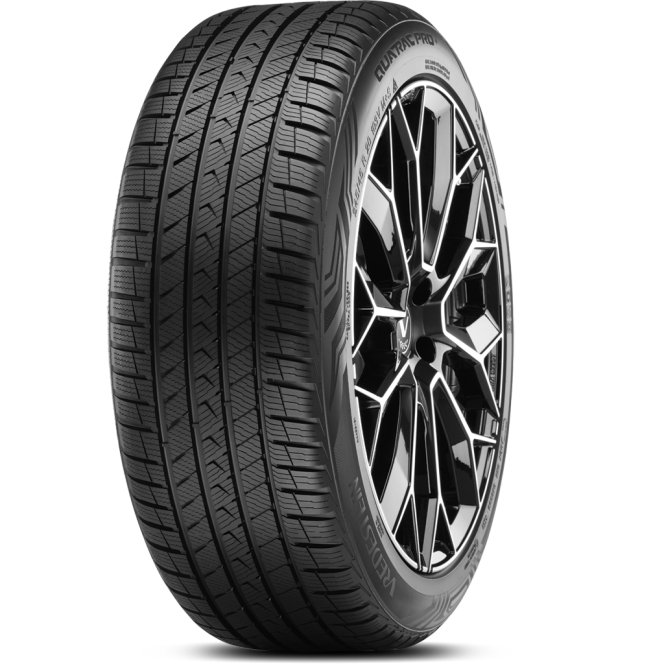
The Vredestein Quatrac Pro+ has been named ‘All Season Tyre of the Year’ at Spain’s prestigious industry awards organised by Neumáticos y Mecánica Rápida magazine and Posventa.com. This premium tyre, manufactured in Europe by Apollo Tyres Ltd, prevailed in a competitive field by excelling in critical areas such as safety, technological innovation and everyday usability, as determined by both an independent expert jury and reader votes.
The tyre earned this honour by delivering exceptional, versatile performance across diverse conditions, providing reliable safety and control on dry roads, in wet weather and through light snow. It also achieves high marks for driving comfort and efficiency. Developed to meet the needs of passenger cars and high-performance SUVs, the Quatrac Pro+ responds to the growing consumer demand for a single, year-round tyre solution that does not compromise on capability or driver confidence.
This award solidifies Vredestein’s position as a leading and innovative reference brand within the all-season tyre market. The official award ceremony is scheduled for February during the annual Tyre of the Year event, which will convene prominent representatives from across Spain’s tyre, automotive and aftermarket industries to celebrate the year’s top products.
Yves Pouliquen, Vice President, Commercial EMEA, Apollo Tyres Ltd, said, “This award is a strong endorsement of our commitment to delivering premium, high-performance all-season tyres tailored to the needs of European drivers. The Quatrac Pro+ encapsulates Vredestein’s longstanding expertise in all-season technology, combining safety, comfort and innovation.”
- INDIAN TYRE INDUSTRY
- TYRE RETREADING
- BIS STANDARDS
- IS 15704
- ECE R109
- CIRCULAR ECONOMY
- MSME CHALLENGES
- AUTOMOTIVE REGULATION
- CARBON REDUCTION
- FREIGHT
- LOGISTICS
Retreading Hangs In Balance Over Regulatory Conundrum
- By Gaurav Nandi
- December 30, 2025
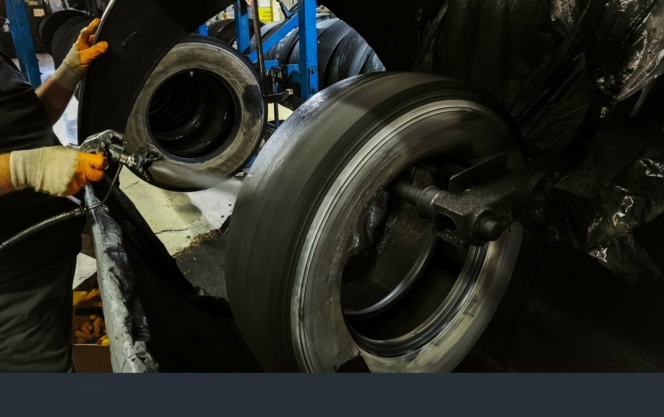
A population of over 1.4 billion people catapulting into the world’s third largest automobile market with four million trucks plying across a road network of 6.3 million kilometres supported by a USD 13.4 billion tyre market and a mining sector contributing around 2–2.5 percent of the country’s GDP demonstrate the strength of India’s automobile, freight and tyre sectors.
The story doesn’t end there as the Central Government adopts a strategic approach on reducing carbon emissions across these verticals, especially automobile and tyres, with targets such as the Net Zero Carbon Emissions by 2070, battery electric vehicles target by 2030, zero-emission truck corridors, Extended Producer Responsibility for the tyre sector; the list just goes on.
Amidst all such statistics and targets, a silent spectator remains the old and varied sector of tyre retreading. In a recent news story reported by Tyre Trends, the Indian Tyre Technical Advisory Committee (ITTAC) had made a proposal to Tyre Retreading Education Association (TREA) for mandating certain standards that will improve the quality of retreads. ITTAC has made recommendations to the BIS committee. TREA is part of the same committee. ITTAC and TREA are recommending different standards.
These standards included BIS retread standards, namely IS 15725, IS 15753, IS 15524 and IS 9168. The ITTAC had partially aligned Indian requirements with ECE R109, the European regulatory benchmark.
In a reply to the proposal, which was accessed by Tyre Trends, TREA urged the Indian Tyre Technical Advisory Committee to seek a deferment or non-applicability of BIS standard IS 15704:2018 for retreaded commercial vehicle tyres, warning that mandatory enforcement could cripple the sector.
In the letter, TREA argued that IS 15704:2018 is largely modelled on new tyre manufacturing norms and is technically unsuitable for retreading, which is a restoration and recycling process.
The standard mandates advanced laboratory tests such as spectrometer-based rubber analysis, endurance testing and compound uniformity checks, requirements that most retreading units, particularly small and medium enterprises, are not equipped to meet
The association highlighted that even large retreaders lack the infrastructure and skilled manpower needed for BIS-grade testing, while the sheer number of retreading units would make inspections and certifications operationally unmanageable for regulators.
TREA warned that compliance costs linked to machinery upgrades, audits and quality control could force 70–80 percent of units to shut down, leading to job losses, higher fleet operating costs and adverse environmental outcomes due to reduced recycling
Instead, TREA proposed that BIS prioritise retreading-specific standards such as IS 13531 and IS 15524, which focus on materials, process control, safety and quality consistency.
The body has also called for a phased transition roadmap, MSME support and industry training before any stricter norms are enforced, stressing that abrupt implementation would undermine the sector’s role in India’s circular economy.
The conundrum
India has a total of 36 administrative divisions comprising 28 states and 8 union territories. The tyre retreading sector has been continuously supporting circularity goals since the early 1970s across the world’s largest economy without getting mainstream recognition.
Even after five decades in service, the industry battles different bottlenecks including fragmentation, manpower shortage, tax pressures brought about by the recent GST revisions and now the implementation of such standards, just to name a few.
The sole practice that can simultaneously reduce carbon emissions from tyres and extend tyre life is assumed the nemesis of an ‘infamous and dangerous practice’ in some states of the country.
However, the industry has been drawing its techniques and quality parameters from the world’s oldest retreading economy, Europe.
“Big retreaders in India already have the necessary processes in place that conform to IS 15524 standards. However, as the standard is not yet mandated, we have voiced support for it because it is process-oriented and outlines how retreading should be carried out, including buffing and building procedures,” said TREA Chairman Karun Sanghi.
He added, “This standard focuses on how the work is done rather than imposing product-level testing that cannot be practically implemented. The current debate on IS 15704 stems from it being fundamentally incompatible. The standard includes requirements such as sidewall marking and destructive testing of retreaded tyres, which are impractical in a retreading environment where each tyre differs in brand, size, application and usage history,” he added.
Destructive testing, he argued, assumes uniform batch sizes. In retreading, where every casing is unique, testing even a single tyre would mean destroying finished products without yielding representative results. Applying such a framework would effectively require the destruction of every tyre in a batch, making compliance unviable.
“We have submitted our response to ITTAC and are awaiting feedback from the committee. We remain open to continued dialogue and will engage further once the committee responds to our submission,” said Sanghi.
According to him, a typical retreader processes about 300 tyres a month across multiple brands including MRF, JK Tyre, Apollo and Michelin and applications ranging from buses and trucks to mining vehicles. These casings vary widely in load cycles, operating conditions and duty patterns, often across several models from the same manufacturer.
The committee has cited European standard ECE R109, but Sanghi points to structural differences: “Europe is a global retreading hub where tyre manufacturers such as Michelin and Bridgestone dominate operations, collect their own tyres, retread them and return them to fleets, making batch-based destructive testing relevant. A similar model exists in US, where large tyre companies lead retreading and largely self-regulate without a single overarching standard. The Indian scenario is different, especially with a fragmented market.”
He stressed that the industry is not opposed to standards but to those that cannot be practically applied, warning that adopting European manufacturing-oriented norms without accounting for India’s market structure and operating realities would be counter-productive.
The debate is no longer about whether standards are needed but whether they are fit for purpose. Without accounting for India’s fragmented retreading ecosystem, enforcing impractical norms could dismantle a circular industry in the name of compliance.
TGL Season 2 Kicks Off With Hankook As Founding And Official Tire Partner
- By TT News
- December 29, 2025
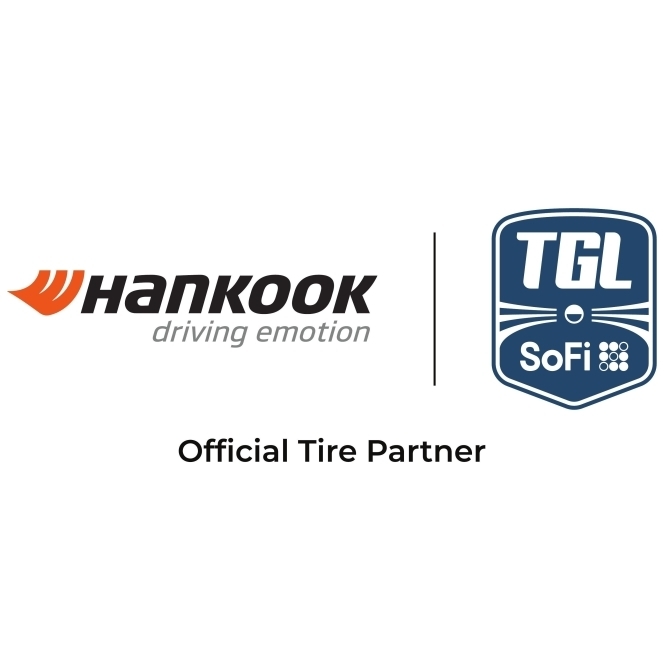
The second season of TGL Presented by SoFi, where Hankook Tire serves as the Founding and Official Tire Partner, commenced on 28 December 2025. This innovative league, a venture of TMRW Sports with backing from icons like Tiger Woods and Rory McIlroy, represents a strategic alignment for Hankook, uniting two entities driven by technological advancement. The partnership provides a global platform to reinforce Hankook's premium brand positioning across North America and worldwide through extensive visibility during broadcasts and at the state-of-the-art SoFi Center in Florida.
This unique venue embodies the league's fusion of sport and technology, featuring a massive simulator with a dedicated ScreenZone and a dynamic GreenZone. This area, equipped with a turntable and over 600 actuators, meticulously replicates real-world golf conditions indoors, creating an immersive arena experience. The competition itself is fast-paced and engaging, with teams of PGA TOUR players competing in Triples and Singles sessions over 15 holes. Innovative elements like the point-doubling ‘Hammer’, real-time strategy via ‘Hot Mic’ and a Shot Clock ensure a dynamic spectacle for fans.
The season opener presented a compelling narrative as a rematch of the inaugural finals, pitting the undefeated Atlanta Drive GC, featuring Justin Thomas and Patrick Cantlay, against a determined New York Golf Club squad led by Matt Fitzpatrick and Xander Schauffele. This match set the tone for an intensive season running through March, where six teams and 24 top golfers will compete. For Hankook, this partnership is more than signage; it is an active engagement with a global community, delivering a distinctive brand experience that bridges cutting-edge mobility and sport for enthusiasts everywhere.
Dunlop Secures CDP ‘A List’ Recognition For Climate Change And Water Security
- By TT News
- December 29, 2025

Dunlop (company name: Sumitomo Rubber Industries, Ltd.) has made its way to the annual A-List of CDP for climate change and water security. This premier designation, awarded for the first time to the company in the 2025 evaluation, recognises world-leading performance in transparency, risk management and environmental action. CDP’s annual assessment is a key benchmark for corporate sustainability across climate, water and forests.
This achievement stems from the Group’s integrated approach to material issues outlined in its corporate philosophy. It treats the interconnected challenges of climate change, biodiversity and the circular economy holistically, advancing concrete initiatives under its long-term ‘Driving Our Future’ sustainability policy.
On climate, the Group’s science-based emission reduction targets for 2030 are validated by the Science Based Targets initiative. Operational efforts include pioneering green hydrogen production at its Shirakawa Factory and developing tyres made entirely from sustainable materials by 2050. The company also works to reduce emissions across its supply chain, lowers tyre rolling resistance to improve vehicle fuel economy and extends product life through retreading.
For water security, the strategy is driven by localised risk assessments at global production sites. In seven facilities identified as high-risk, the goal is to achieve 100 percent wastewater recycling by 2050. Progress is already evident, with the company’s Thailand factory reaching full wastewater recycling in 2024.
These coordinated actions on multiple environmental fronts formed the basis for the Group’s simultaneous top-tier recognition in both critical categories from CDP.


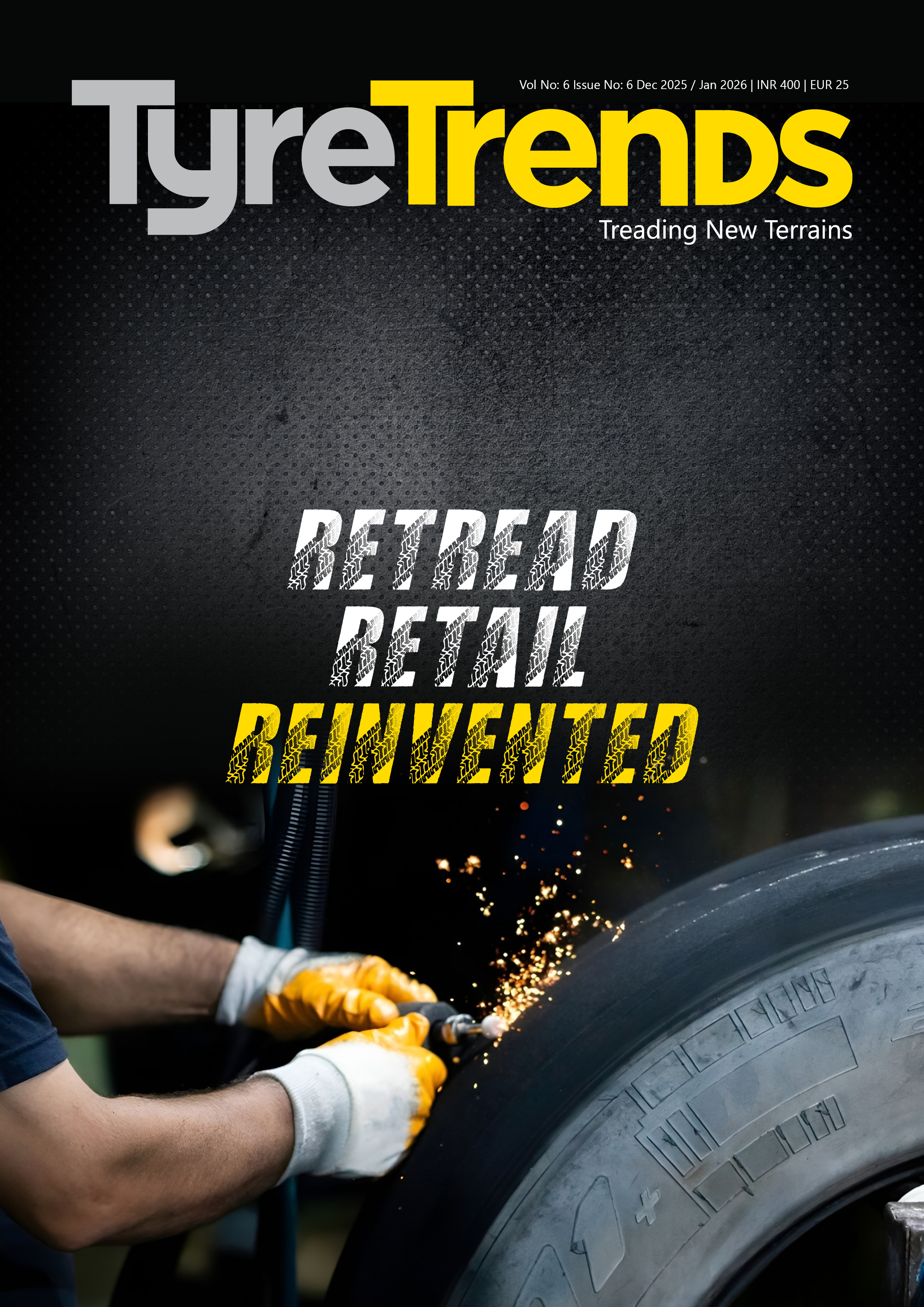



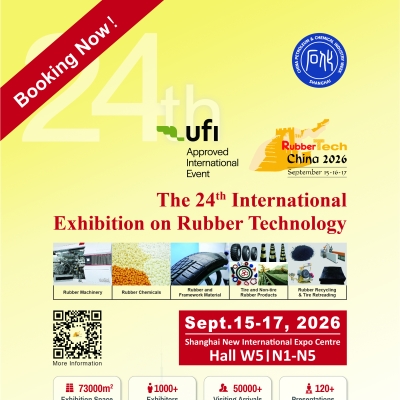
Comments (0)
ADD COMMENT